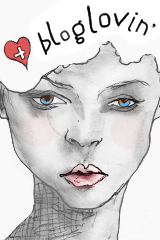
Some of the best things about having a bird for a pet is holding it on your hand, letting it hang out on your shoulders, even on your head, and listening to it chirp and chatter in your ear. Birds, like humans, have nails, and when their nails get too long the experience can be annoying, if not painful, when the bird digs its little nails into our skin. Fortunately, this is relatively easy to remedy, but you will need to plan ahead and have all of the tools necessary for the task.
Prepare for success: Because you will need to wrap your bird in a towel for grooming, part of the planning includes getting your bird accustomed to towels. Using a light colored towel -- bright colored towels might alarm your bird -- lay the towel on your hand and allow the bird to climb onto the towel, maybe with some little treats and "good bird" affirmations to encourage your bird to be comfortable with the towel. Do this on a regular basis so that when it is time to use the towel, your bird will associate it with good times.
Tools of the trade: For G-Day (grooming day), gather all your grooming materials and ask a friend or family member to help (it is best if your bird is already familiar with the person). Again, you don’t want your bird to be overly alarmed by the process. If you should happen to cut a little too close to the quick when clipping the nail, use styptic powder, an antihemorrhagic that stops excessive bleeding. The other essential tool is the specially designed nail clipper for birds. The size of the clipper will depend on whether yours is a small or large bird. For a small bird, a pair of nail scissors may work out well enough, but for a big bird, a clipper that can cut through the thicker nail quickly and cleanly will be essential.
Take control: Begin by draping the towel over your bird’s back, leaving its head uncovered. As you wrap the towel around your bird’s body and take the bird into your hands, be sure that you are holding it firmly at its sides, taking care not to press against its chest. This is important because birds do not have a diaphragm, so putting too much pressure on the chest may cause them to suffocate. Even the most domesticated birds can get a little upset by being wrapped up, so you will need to take control of your bird’s head to keep from being bitten. While holding the body with one hand, use your other hand to hold the bird’s head. Place your thumb on one side of the bird’s head and your middle finger on the other, holding firmly enough to keep the bird from turning its head freely. Maintain the bird's head still from the top with your index finger and reassure your bird with kind words to keep it calm.
Clipping the nails: Whether it is you, a friend, or family member that is trimming your bird's nails, the steps are the same. Place one finger within reach of your bird’s feet so that it can grasp onto the finger. Use your thumb to lift each nail off of your finger, clipping just a small amount of the nail. You can always clip a little more from the nail, but if you miss the mark and clip too much the first time, you will have a very freaked out and bleeding bird to deal with, which is dangerous, as birds can bleed to death from this type of injury if it is not handled quickly. To avoid this scenario, first identify where the edge of the nail meets the quick (you can usually see this with light colored nails, as the nail is white and the quick is pink). If your bird’s nails are dark, use extra care and trim just a little at a time. Additionally, if your bird is handling the experience well, you may want to try smoothing out the edges of the nail with a nail file, but it is not necessary.
What to watch out for: Watch your bird closely as you are trimming its nails. You can expect your bird to be vocal about the indignity of the situation, often attempting to escape from your grasp. But if your bird appears to be having trouble breathing, is panting, is moving too much to keep a firm hold, or seems to have lost motor coordination -- like its eyes rolling back in its head -- stop immediately and place your bird back on its perch or in its cage and allow it to calm down, while speaking in a soothing tone. You can try to trim its nails again later, but if you encounter the same problems, have a skilled veterinarian or bird groomer do it for you.
Final tips: Try to begin the nail trimming routine while your bird is young and use treats after the clipping so that your bird always associates this activity as a good thing. In between clips, place a sand or pumice stone perch (in addition to its natural wooden perch) in the cage. This will allow the bird to file its own nails and reduce the frequency of the nail clippings. In the wild, birds use both wood and stone to groom their own nails and beak, so having both for your bird will save you a lot of trouble in the long run.
Image: Eric Bryan / via Flickr
Article: PetMd.com








0 comments: